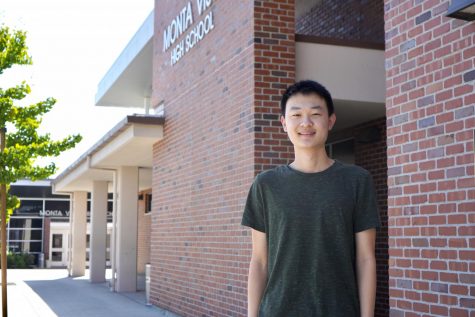Stressing the numbers
Exploring the results of wellness surveys in recent years
Sleep deprivation is a common problem across FUHSD schools.
August 26, 2019
Superintendent Polly Bove recently shared insights on the results of a 2019 student wellness survey, which was administered across FUHSD schools for the Student Wellness Council to gather data on students’ sleep, anxiety and depression patterns.
Over 7,000 students – 89% of FUHSD students – took the survey in early 2019 that measured their levels of depression and anxiety through clinically designed questions, which have been the district’s measurement tools since 1985. According to Bove, the 2019 results are nearly in line with those from 1985. Furthermore, results across all five schools in the district appear to be very similar. Bove and the Wellness Council are currently in communication with a specialty firm to analyze these results and find its causes.
“We’re trying to look at the statistics of that [and] really delve into it,” Bove said. “We’re trying to not only do the pivots, what would be connected to what, but then whether [it’s] statistically significant.”
Looking forward, a committee of various stakeholders in the community will identify the causes of stress and anxiety and look for ways to decrease triggers.
According to a previous survey conducted in 2017, only 14% of FUHSD students fell within the American Academy of Pediatrics’ recommended amount of 8.5-9.5 sleep hours per night. In fact, 23.2% of students slept only half that amount. Lynbrook High School senior Kaylin Li attributes this unhealthy trend to the harmful culture she says is prevalent at FUHSD schools.
“People tend to stay up really late,” Li said. “Some people at our school district almost compete to see how many hours of sleep [they] can’t get. If someone can get less sleep, it’s almost glorified.”
Other students, such as junior Aaron Tsang, often find themselves busy with extracurricular activities and completing homework for up to seven classes. For Tsang, balancing school and extracurriculars often keeps him from sleeping for the recommended amount of time.
Tsang highlights procrastination as a major factor for sleep-deprivation among students. He explains how he pushes assignments aside until the very last minute, thereby creating more stress to stay up late in order to finish.
In addition to procrastination, many students attribute a variety of other factors of this trend to stress, from conflicting exam dates and deadlines across classes to “good” and “bad” teachers.
Although Bove says the committee is still unsure of the general causes for the students’ stress levels, she has begun to address various angles to combat student stress. As a systemic issue in the community, Bove sees collaboration between everyone — students, families and administration — as necessary to fully address the issue.
“So [if] we’re going to talk about based on particular stressors or particular issues, what are things schools can do?” Bove said. “What are things families and parents can do? What are things students can do? What are things the community can do?”
While the effectiveness of some of the solutions in the making may still be unknown, many students have found their own ways to relieve stress. Tsang, for example, has observed that planning out deadlines and organizing a daily schedule helps reduce procrastination and stress, especially for people who may unknowingly underestimate the actual time commitment specific tasks require.
“I talked to people and they made me create a schedule of sorts, where I plan out my week,” Tsang said. “So second semester sophomore year, I started using [it], and I finished my work a lot quicker and I spent less time on social media.”
In response to the results of the earlier sleep deprivation survey in 2017, the school board has been implementing changes in the hopes of increasing student wellness. From delaying school start times for schools across the district to adding more tutorial periods for students to utilize, district officials have hoped to see a reduction in sleep deprivation, anxiety and depression.
Li believes that although these changes are helpful, their net effect on the student body is hard to evaluate because students utilize the extra allotted time differently. Some students, for example, tend to take advantage of extra time to complete more work at home, resulting in less sleep, while others tend to enjoy the benefits of the delayed start times to gain more sleep and complete their work at school.
Regardless of whether students believe the updated bell schedule has helped reduce the general issue of stress, Bove wants students in the district to know that administrators are making progress regarding the recent stress survey results and that changes will remain fully transparent for students.
“We’re getting back that part of the results and we’re happy to be coming out and sharing it with students as well,” Bove said. “We [are] committed to coming back with the information.”
















